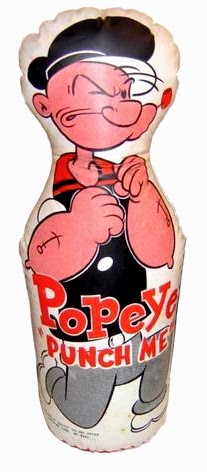
Have seen no studies establishing that it directly affects the activity of tyrosinase. In dogs, most authorities classify a chinchilla-like mutation as an allele in the C series, but I The degree to which the coat is lightened depends on the species. For some reason, the melanin that is made is primarily the dark eumelanin. In mice, this allele produces defective tyrosinase which cannot synthesize the normal amounts of melanin. In many mammals, there is a third allele, chinchilla (c ch ).
#COBRA PACK A PUCHED EFFECT ON DOGS SKIN#
Albinos have no pigment in the nose, eyes, hair or skin - and are very rare.
#COBRA PACK A PUCHED EFFECT ON DOGS FULL#
CC or Cc dogs have full color, as determined by the other genes carried. Albinos (cc) are homozygous for a recessive mutant allele. One thing almost universally agreed upon by geneticists is that true albinos, lacking all melanin-based pigments, result from a deficiency in this enzyme. Though there are two main types of melanin, both depend on the enzyme tyrosinase. Various genes affect the number, shape, arrangement or position of these granules, or the type of melanin they contain. In the hair, melanin is found in minute pigment granules. There are two related types of melanin sythesized by the melanocytes, dark eumelanin (black or brown) and light phaeomelanin (yellow, tan or reddish). Mutant alleles of the Merle gene are also rare or nonexistant in the poodle.

The extreme white piebald allele is thought to be responsible for all-white animals in some breeds, but not in the poodle. In Germany, they have their own registry. In England and North America, a poodle must now be a solid color to be shown in conformation. The parti-colored black and white poodle, once fairly common, is likely s ps p. The piebald allele produces a fairly well defined pattern of dark and white areas. This is probably the allele that produces mismarks. self (complete pigmentation dominant)ĭogs homozygous for Irish spotting have irregular white patches. Two such genes that are found in many breeds are Spotting (S) and Merle (M). This can result unpigmented (white) areas. There are also genes that affect the pathways of migration of the cells destined to form melanocytes. To my knowledge, there are no known mutations of this type in the poodle. However, mutations affecting these signalling processes generally more than just the melanocytes resulting in various defects. The result would be an animal without pigmentation in the skin or hair. If the ones that would normally give rise to melanocytes get the wrong signal, or interpret it incorrectly due to a mutation, they may do something else (or nothing at all). Neural crest cells contribute to a wide variety of tissues and organs and have to be "told" what their fate is. Melanocytes come from a population ofĬells, called the neural crest, that is located on the dorsal mid-line of the early embryo. Synthesized in specialized cells called melanocytes. Pigmentation in mammals is primarily due to the presence of melanin, which is Now that some of these genes are being cloned and sequenced, the opportunity is before us to settle some old controversies (while undoubtedly creating some new ones.) However, as there are a large number of genes (over 85 have been implicated in the mouse), one often encounters mutations in different genes producing nearly identical phenotypes.


Prior to the advent of modern gene-sequencing techniques, geneticists used this basic similarity to extrapolate from one breed or even one species to another.

The biosynthetic pathways involved in the synthesis of the pigments, and the genes involved in the development of the pigment-forming cells (the melanocytes), the hair follicle and the hair shaft, appear to be very similar in most species. Much of what we have learned is from breeding experiments with mice and, to a lesser extent, domestic animals including the dog. The control of coat color and pattern in mammals is complex. Color Genes in the Poodle Color Genes in the Poodle by John Armstrongĭepartment of Biology, University of Ottawa, Ottawa, ON


 0 kommentar(er)
0 kommentar(er)
